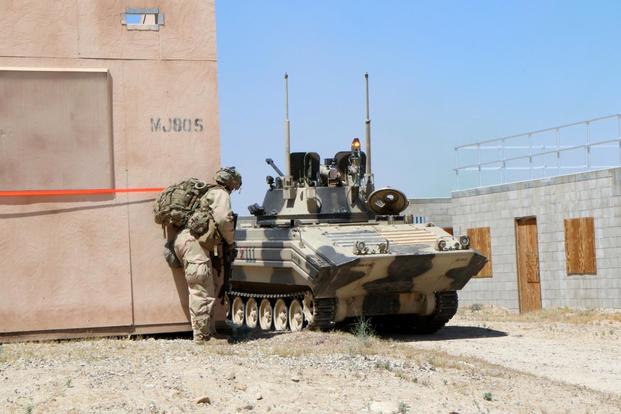FORT IRWIN, California -- One of the takeaways 3rd Infantry Division soldiers here can agree on is that the National Training Center shows a unit what it's like to fight a formidable enemy on its own turf.
"When we do training exercises like this back at Fort Stewart [Georgia], the enemy is wearing the same uniform that we are wearing. They use the same equipment, the same tanks and everything, so it's kind of a pain to discriminate between what is enemy and what is friendly," said Spc. Kalani Palacio, a forward observer attached to the 2nd Armored Brigade Combat Team's 2nd Battalion, 69th Armor Regiment. "But here, you can clearly distinguish friend and foe, and I think that is pretty important."
The Army's 11th Armored Cavalry Regiment, known as the "Black Horse," plays the opposing force (OPFOR) at NTC. It's equipped with nearly 200 hybrid vehicles constructed out of M113s equipped with Bradley turrets to replicate Russian Army BMP 3 fighting vehicles and T90 tanks.
OPFOR units know the 1,000 square miles of training space extremely well, forcing visiting units to use the mountainous terrain to hide their formations from detection.
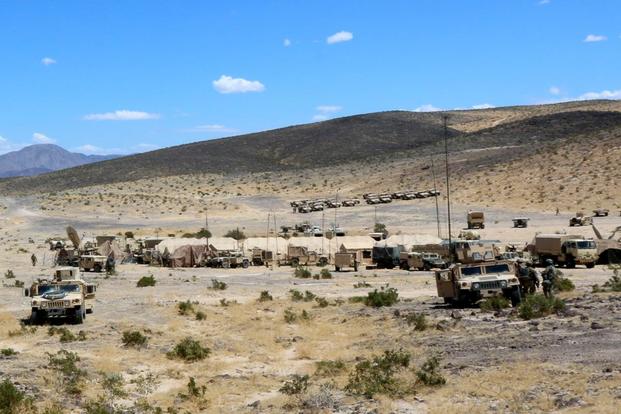
Soldiers from the 2nd ABCT have quickly learned to respect the Black Horse and its tactical prowess on the battlefield.
"I think it's good that it's hard, that these people know the terrain, because worst-case scenario, the people that we fight are also going to know their terrain," said Sgt. Stephen Lacy, a gunner on an M1 tank from 3rd Battalion, 67th Armored Regiment. "It's a hard enemy to fight."
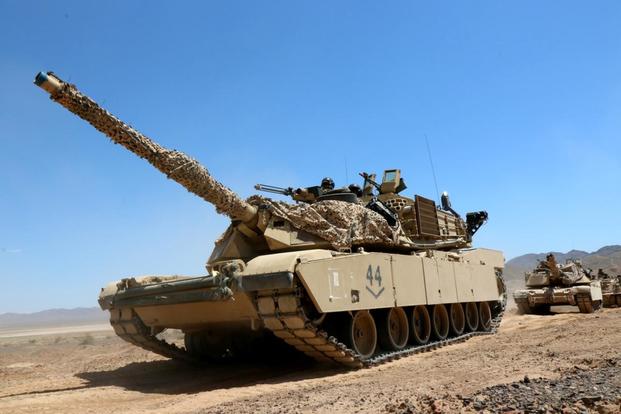
One of the goals of the cadre of observer-controllers (OCs) is to teach units how to improve their planning processes and use their combined-arms capabilities more effectively against an enemy like the OPFOR at NTC.
"Where we have an OPFOR that is as capable as Black Horse [which] operates off of a near-peer enemy doctrine, we really need to first understand the terrain that we are operating on and understand the enemy and the way that they will execute their operations," said Maj. James Carr, an OC and brigade executive officer trainer at NTC.
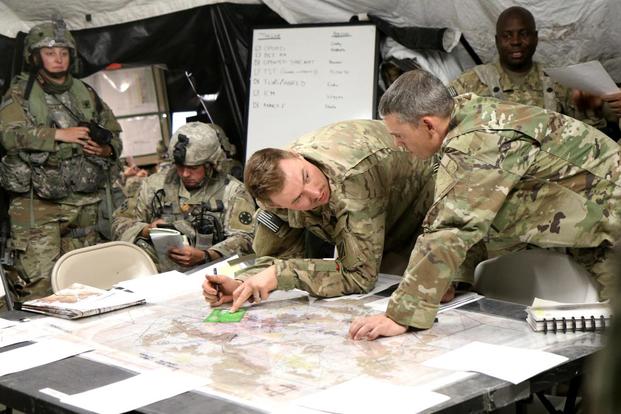
"Once we understand what the enemy is doing, and we have done the science and the analysis, we can then start to define what our plan is and then go through the planning iterations of developing a concept of operations of 'How are we going to defeat the enemy?'" he said.

One of the main challenges of the 2nd ABCT's recent rotation here was a May 8 attack on the fictional town of Razish, one of NTC's largest urban complexes.
Units had to maneuver Bradley fighting vehicles, tanks and other vehicles through enemy-held terrain before they could begin their assault on the enemy-held town.

After breaching an obstacle designed to deny access to the town, the Bradleys surged forward so infantrymen could dismount and begin clearing the hundreds of buildings in the town.
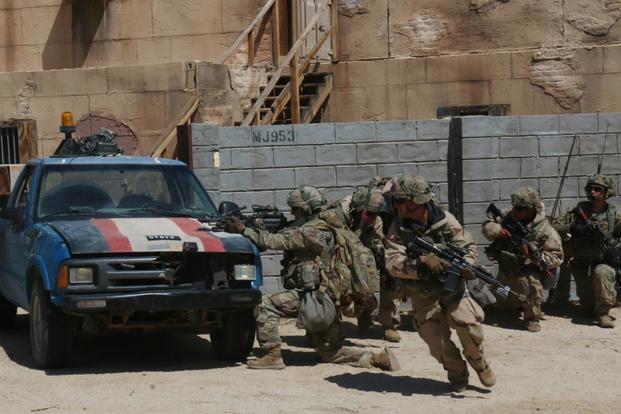
Squads of soldiers sprinted across open areas, clearing building after building. Simulated enemy machine-gun and rifle fire took its toll on 2nd ABCT soldiers, triggering the Multiple Integrated Laser Engagement System (MILES) they wore on their equipment.
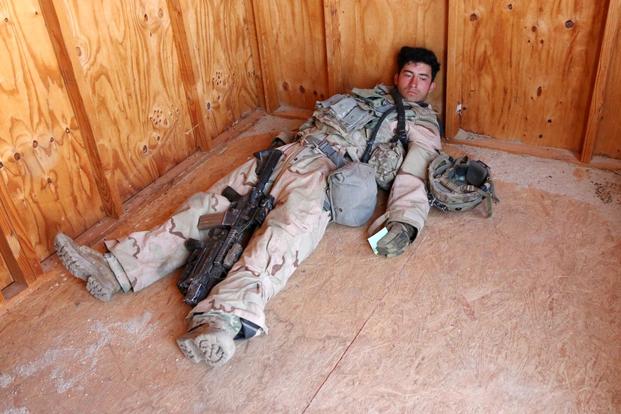
Casualties are given a casualty card and evacuated to the field hospital nearby.
Wounded soldiers usually rejoin their units within six to 12 hours, said Col. Carl Michaud, deputy commander of NTC.
"If they died of wounds, then it's probably going to be 24 hours before they are sent back," he said.
Leaders from 2nd ABCT were reluctant to discuss exact casualty figures, but Lt. Col. Arthur McGrue III, commander of 3rd Battalion, 15th Infantry Regiment, said the attack on Razish cost him all but two of the battalion's Bradleys.
"It forces a unit to think through what they are going to do for the next mission, because if I just lost six tanks and 20 soldiers ... I may not be capable to do what the commander needs me to do," NTC Command Sgt. Major Matthew Lowe said.
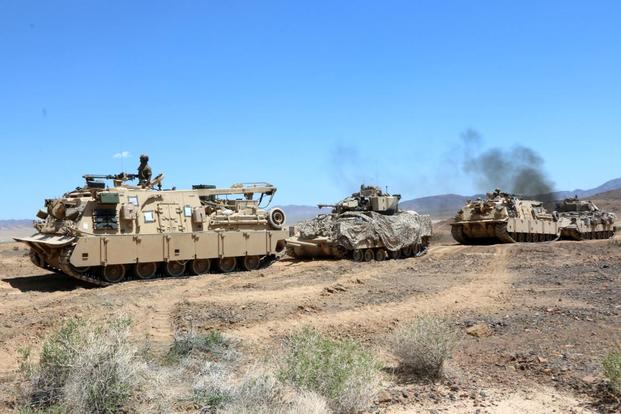
-- Matthew Cox can be reached at matthew.cox@military.com.
